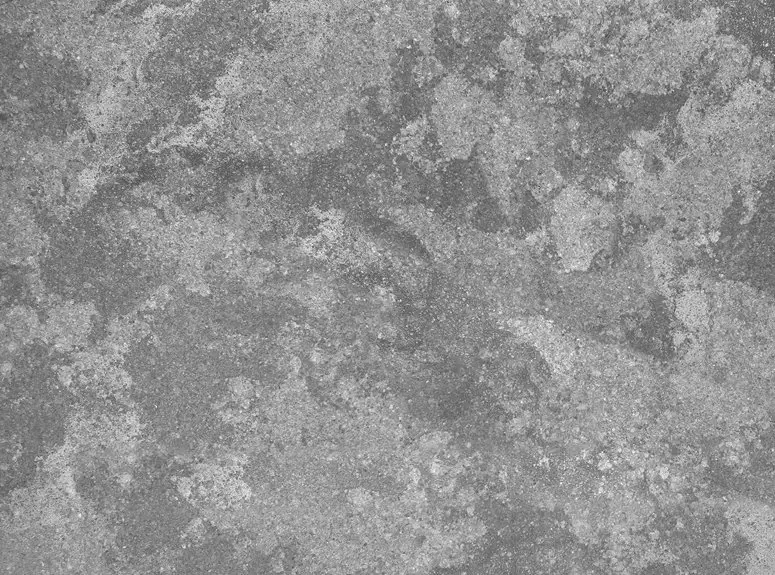You’ll find corduroy quite durable thanks to its cotton or cotton-blend makeup and unique ribbed weave that resists wear and tear. Its thick, tightly woven fibers handle daily use well, standing up to abrasion better than many fabrics. Though it may develop minor piling or fading over time, proper care can keep it looking good longer. If you want to understand how its structure impacts performance and how to maintain it, there’s more to discover ahead.
Table of Contents
Key Takeaways
- Corduroy’s durability comes from its cotton or cotton-blend fibers combined with a sturdy woven structure featuring raised ribs called wales.
- The thickness and density of the wales directly influence corduroy’s abrasion resistance and ability to withstand wear and tear.
- Corduroy resists pilling and fabric breakdown better than many fabrics, maintaining texture through frequent use and movement.
- Compared to denim and canvas, corduroy offers softer comfort with moderate durability, ideal for everyday clothing rather than rugged use.
- Proper care, including gentle washing and air drying, greatly extends corduroy’s lifespan by preventing fading, piling, and crushing of the fabric’s texture.
What Is Corduroy Fabric Made Of?
Although you might think corduroy is just another cotton fabric, it actually combines different materials to achieve its unique texture and durability.
Typically, corduroy is made from cotton or a cotton blend, offering softness and breathability. Sometimes, manufacturers add synthetic fibers like polyester or spandex to enhance strength and flexibility.
This blend helps the fabric resist wear and maintain shape over time. The cotton provides comfort, while the synthetic components contribute to durability, making corduroy suitable for everyday wear.
When you pick out corduroy clothing, knowing its composition can help you understand why it lasts longer than other fabrics.
Understanding the Construction of Corduroy
You’ll notice corduroy’s unique texture comes from its distinct fabric structure and weave.
The raised ribs, or wales, are created by cutting and weaving extra sets of yarn.
Understanding these rib patterns helps you see why corduroy stands out in both style and durability.
Corduroy Fabric Structure
Because corduroy combines weaving and tufting techniques, its unique structure offers both strength and texture.
When you look closely, you’ll notice that corduroy is made from a woven base fabric with raised parallel ridges called wales. These wales form when extra sets of yarns are woven into the base fabric and then cut or looped to create the pile. This pile gives corduroy its distinctive ribbed appearance and a soft, velvety feel.
The integration of these raised ribs with a sturdy woven foundation provides durability while maintaining flexibility. As you handle corduroy, you’ll appreciate how this construction resists wear and tear better than many other fabrics, making it ideal for clothing and upholstery that need to endure frequent use.
Weave and Rib Patterns
The weave and rib patterns define corduroy’s character and performance. When you look at corduroy, you see its distinctive ribs or “wales”—these vertical ridges come from the weaving process that interlaces extra sets of yarns to form the pile. The number and width of wales directly affect durability and texture, so understanding them helps you pick the right corduroy for your needs.
| Rib Pattern | Characteristics |
|---|---|
| Wide wale | Fewer ribs, thicker pile |
| Medium wale | Balanced texture and feel |
| Narrow wale | More ribs, finer texture |
| Pinwale | Very fine ribs, soft feel |
| Pincord | Extremely narrow ribs |
Choosing the right rib pattern can enhance both the strength and comfort of your corduroy garment.
Factors That Affect the Durability of Corduroy
Although corduroy’s unique texture gives it charm, several factors determine how well it holds up over time.
First, the quality of the cotton or blend used affects its strength and resistance to wear. Higher-quality fibers mean better durability.
Second, the thickness and density of the wales (ridges) play a role; tightly packed, thicker wales tend to resist abrasion more effectively.
Third, how the fabric is treated during manufacturing—like pre-shrinking or finishing—impacts its longevity.
You should also consider how you care for your corduroy; frequent washing or harsh detergents can break down fibers faster.
Finally, the garment’s construction, including stitching and reinforcement, influences how well it withstands daily use.
Mind these factors, and your corduroy will last longer, keeping its distinctive look intact.
Comparing Corduroy to Other Common Fabrics
You’ll want to see how corduroy stacks up against denim, canvas, and twill when it comes to durability.
Each fabric has unique strengths and wears differently over time.
Let’s compare their toughness and longevity to help you choose the best option.
Corduroy Vs Denim
Comparing corduroy and denim reveals two fabrics with distinct textures and strengths. When you choose between them, consider their look, durability, and comfort. Corduroy’s ribbed texture offers a softer feel, while denim’s twill weave is tougher and more abrasion-resistant. Both fabrics age well but in different ways—corduroy may show wear on its ribs, whereas denim fades evenly.
| Feature | Corduroy | Denim |
|---|---|---|
| Texture | Ribbed, soft | Smooth, sturdy |
| Durability | Moderate, rib wear possible | High, resists abrasion |
| Comfort | Warm, flexible | Stiffer initially |
You’ll find corduroy ideal for casual, cozy wear, while denim suits rugged use and longer lifespan.
Corduroy Vs Canvas
When you weigh corduroy against canvas, you’ll notice clear differences in texture and durability that affect their uses.
Corduroy’s soft, ribbed surface contrasts with canvas’s plain, tightly woven fibers. Canvas is generally tougher and more resistant to abrasions, making it ideal for heavy-duty applications like bags and outdoor gear.
Corduroy, while durable, suits casual wear better due to its flexibility and warmth. Here’s how they compare:
- Corduroy offers a plush feel; canvas feels rougher and sturdier
- Canvas resists tearing and scuffing better than corduroy
- Corduroy is more breathable but less water-resistant than canvas
- Canvas handles exposure to elements with less wear
- Corduroy provides a stylish, textured look; canvas is more utilitarian
Choose based on your need for comfort versus rugged durability.
Corduroy Vs Twill
Although both corduroy and twill feature distinctive diagonal patterns, their textures and durability serve different purposes.
When you choose corduroy, you get a fabric with raised ridges, offering a soft, plush feel ideal for cooler weather.
Twill, on the other hand, has a tighter weave with a smoother surface, making it sturdier and more resistant to wear.
If you want durability for heavy-duty use, twill often outperforms corduroy because it resists tearing and abrasion better.
However, corduroy’s pile can wear down over time, especially in high-friction areas.
So, if you prioritize comfort and warmth, corduroy’s a great pick.
But for long-lasting strength and less maintenance, twill might be the smarter choice.
You’ll want to weigh these factors based on your needs.
How Corduroy Performs Under Daily Wear and Tear
Because corduroy features tightly woven fibers with raised ridges, it stands up well to daily wear and tear. When you wear corduroy regularly, you’ll notice it resists abrasion better than many fabrics. The ridges protect the underlying threads, reducing the chance of holes or thinning.
Even with frequent use, corduroy maintains its texture and appearance longer than you might expect. However, it can show signs of flattening in high-friction areas over time.
You’ll observe corduroy handling:
- Daily movements without excessive pilling
- Sitting and bending without quick fabric breakdown
- Frequent washing while retaining shape
- Minor scuffs that don’t damage the weave
- Gradual softening rather than harsh wear
This makes corduroy a reliable choice for everyday clothing.
Best Uses for Corduroy Based on Its Strength
Since corduroy combines durability with a distinctive texture, you can rely on it for garments that need both strength and style.
Corduroy offers the perfect blend of durability and unique texture for stylish, long-lasting garments.
It’s perfect for casual pants, jackets, and skirts that endure regular use without showing wear quickly. If you’re into outdoor activities or work that demands tough clothing, corduroy offers a sturdy option that withstands abrasion better than many fabrics.
You’ll also find it great for children’s clothing since it handles rough play well. For home décor, corduroy works wonderfully on upholstery and cushions, providing a durable surface that resists everyday wear.
Just remember, its resilience makes it ideal where both comfort and toughness matter, so you can confidently choose corduroy for pieces that need to last and look good doing it.
Tips for Maintaining and Extending Corduroy’s Lifespan
To keep your corduroy looking its best, you’ll want to handle it with care during washing and storage. Treat it gently to prevent wear and maintain its texture.
When washing, always turn corduroy inside out and use cold water to protect the fabric. Avoid harsh detergents and skip the dryer when possible, opting to air dry instead.
Proper storage also matters: keep corduroy garments hanging or folded neatly to avoid creases and crushing the pile.
Here are five key tips to extend your corduroy’s lifespan:
- Turn garments inside out before washing
- Use mild detergent and cold water
- Air dry instead of using a dryer
- Store hanging or folded without heavy stacking
- Brush gently with a soft clothes brush to maintain the nap
Common Problems and How to Avoid Them With Corduroy
Although corduroy is a durable fabric, it can still face common issues like fading, piling, and crushing if not cared for properly.
To prevent fading, avoid washing your corduroy in hot water and keep it out of direct sunlight for long periods.
Piling happens when fibers loosen and tangle, so turn garments inside out before washing and use a gentle cycle.
Crushing flattens the fabric’s distinctive ridges; to avoid this, hang your corduroy pieces instead of folding them and steam rather than iron to revive the texture.
Also, steer clear of harsh detergents or bleach, which can weaken fibers.
Choosing Quality Corduroy: What to Look For
Taking care of your corduroy starts with picking the right fabric in the first place.
Choosing the right corduroy fabric is the first step to ensuring lasting quality and comfort.
When shopping, focus on quality to guarantee durability and comfort. Look closely at these key factors:
- Fabric weight: Heavier cords tend to last longer and resist wear better.
- Wale count: Finer wales (narrow ribs) create a smoother, more durable surface.
- Material blend: Pure cotton offers breathability, while blends with synthetic fibers add strength.
- Stitching quality: Even, tight stitches prevent seams from unraveling.
- Color consistency: Uniform dye indicates good processing, reducing fading over time.
Frequently Asked Questions
Can Corduroy Be Recycled or Repurposed Effectively?
Think of corduroy as a well-worn book; you can recycle or repurpose it effectively by turning old garments into patches, bags, or upholstery. You’ll reduce waste while giving corduroy a second life with style and purpose.
Is Corduroy Fabric Environmentally Friendly to Produce?
You’ll find corduroy’s environmental impact depends on its fibers; organic cotton corduroy is more eco-friendly, but conventional cotton uses lots of water and pesticides. Choosing recycled or sustainably produced corduroy helps reduce harm.
How Does Corduroy React to Different Types of Cleaning Chemicals?
Cleaning corduroy with harsh chemicals is like throwing a tornado at a teddy bear—it can damage fibers and fade colors. You’ll want to stick to mild detergents and avoid bleach to keep it looking fresh and soft.
Are There Any Cultural or Historical Significances of Corduroy?
You’ll find corduroy has roots in 18th-century England, often linked to working-class wear. Over time, it gained popularity across cultures for its warmth and texture, symbolizing both practicality and vintage style.
Does Corduroy Fabric Cause Allergies or Skin Irritation?
You might wonder if corduroy irritates your skin. Usually, it doesn’t cause allergies, but if you’re sensitive to certain fibers or dyes, you could experience mild irritation. Always check fabric content before wearing it close.
- Does Chiffon Fabric Stink - July 15, 2025
- Does Chiffon Fabric Affect the Economy - July 15, 2025
- Does Cotton Fabric Have a Nap - July 15, 2025






